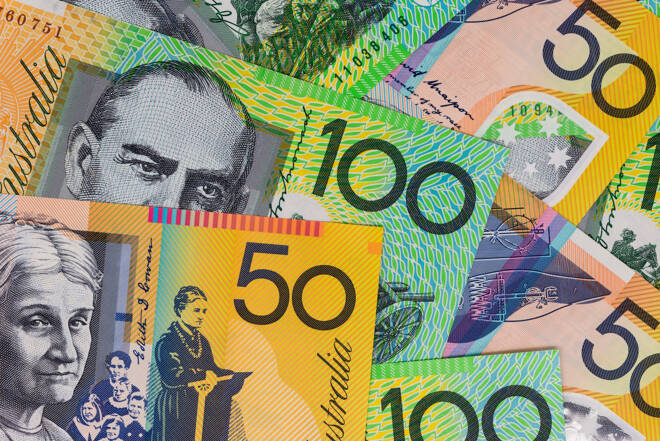Advertisement
Advertisement
AUD to USD Forecast: Eyes on Aussie Inflation and RBA Rate Path
By:
Key Points:
- On Wednesday, Australian inflation figures for the first quarter warrant investor attention.
- Hotter-than-expected inflation numbers could fuel speculation about an RBA interest rate hike.
- Later in the day, US core durable goods orders also need investor consideration.
Aussie Inflation and the RBA Interest Rate Path
On Wednesday, Australian inflation figures will bring the AUD/USD and RBA into focus. Following the private sector PMI numbers for April, hotter-than-expected inflation numbers could return an RBA interest rate hike to the table.
Economists forecast the annual inflation rate to soften from 4.1% to 3.4%. Moreover, economists expect consumer prices to increase by 0.8% in Q1 (2024) after rising by 0.6% in Q4 (2023).
In March, the RBA discounted the threat of an RBA interest rate hike. However, better-than-expected private sector PMI numbers for April signaled a more upbeat economy than the RBA projected.
A more hawkish RBA rate path could raise borrowing costs and reduce disposable income. Downward trends in disposable income could affect consumer spending and dampen demand-driven inflation.
Beyond the numbers, investors should continue to monitor fiscal stimulus chatter from Beijing. Fading hopes of a meaningful stimulus package could affect demand for iron ore and buyer appetite for the Aussie dollar.
US Economic Calendar: Durable and Core Durable Goods Orders
Later in the session, US durable and core durable goods will attract investor attention. Production numbers will unlikely impact investor sentiment toward the Fed rate path.
Nevertheless, better-than-expected figures would support expectations of the US avoiding a recession. A robust economic outlook could drive consumer confidence and spending. Upward trends in consumer spending would fuel demand-driven inflation and affect the Fed interest rate trajectory.
Economists forecast durable goods orders to increase by 2.5% in March after rising by 1.3% in February. Moreover, economists expect core durable goods orders to increase by 0.3% after rising by 0.5% in February.
Following the US private sector PMI numbers, investors raised bets on a September Fed rate. However, the Personal Income and Outlays Report will likely be pivotal.
According to the CME FedWatch Tool, the probability of the Fed leaving interest rates unchanged in September stood at 28.6%. On Monday, April 22, the chances of a Fed hold stood at 33.4%.
Short-Term Forecast
Near-term AUD/USD trends will hinge on the inflation numbers from Australia and the US Personal Income and Outlays Report (Fri). Hotter-than-expected Aussie inflation numbers could fuel bets on an RBA rate hike. A more hawkish RBA rate path would tilt monetary policy divergence toward the Aussie dollar.
AUD/USD Price Action
Daily Chart
The AUD/USD hovered below the 50-day and 200-day EMAs, confirming the bearish price trends.
An Aussie dollar break above the 50-day EMA would support a move to the 200-day EMA and the $0.65760 resistance level.
Aussie inflation and US economic data warrant investor interest.
Conversely, an AUD/USD fall through the $0.64582 support level could signal a drop toward the $0.62713 support level.
Given a 14-period Daily RSI reading of 47.91, the AUD/USD may fall to the $0.63500 handle before entering oversold territory.
About the Author
Bob Masonauthor
With over 28 years of experience in the financial industry, Bob has worked with various global rating agencies and multinational banks. Currently he is covering currencies, commodities, alternative asset classes and global equities, focusing mostly on European and Asian markets.
Did you find this article useful?
Latest news and analysis
Advertisement
